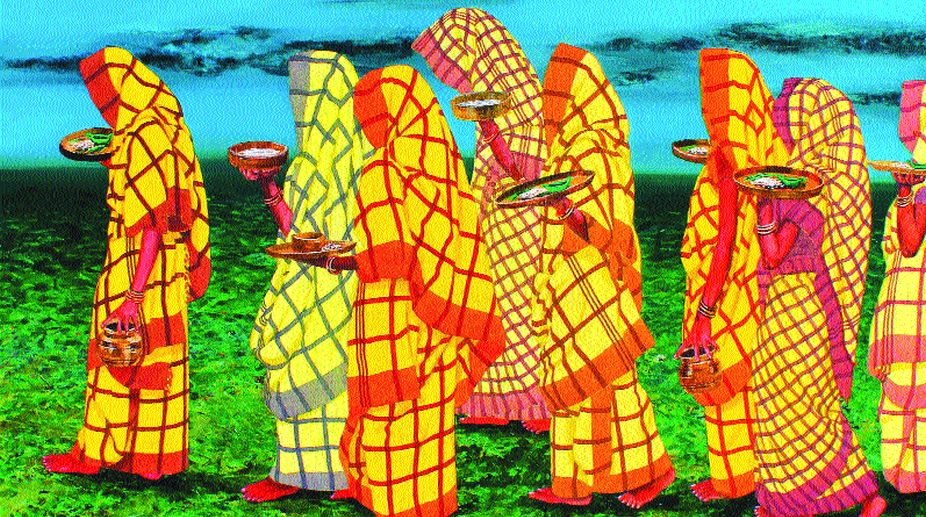Rekha Mehra, a trained classical dancer, exponent of Kathak, choreographer, teacher and social activist, has blended Indian mythology with traditional dance, along Jaipur and Lucknow Gharanas. President, Urvashi Dance Centre, Safdurjung Enclave, she has also been teaching dance and music to underprivileged children for the last five years.
Widely performed, Mehra has choreographed some thematic dance compositions for social awareness and promotion of physical, social and mental well-being of women and children, such as HIV-AIDS, Global Warming, Women Empowerment, War and Peace, Dhani Chunaria, Road Safety, Athithi Devo Bhav, Save The Girl Child: Ladli and Bhagidari Mela for National and international audiences and been much appreciated.
Advertisement
At the SCOPE Complex Auditorium recently, with Jathagat-Tathagat, her students performed in glittering costumes on a well-set stage. The lone male performer was brisk and undoubtedly a seasoned performer. Light footedness and supleness are the backbones of Kathak dance, where from movement to music everything is soft, intricate and nuanced. In spite of impeccable costuming, this lightness remained lacking in many performances, with fluidity replaced by heavy footfalls and rigid arm swings, the audio accompaniment a tad too loud to please the ears.
Till of course our gold and white clad underprivileged children stepped on stage. They indeed performed as dedicated Kathak exponents. Visually they could be weighed in feather, footwork brisk and ephemeral, with electrified feet, they performed as if were born to dance. Movements fleeting and fluid, perfect to timing, the girls were a credit to Mehra, in her efforts at teaching, so richly and tastefully costuming, inspiring the young girls to dance so with their hearts in it. A huge investment, bearing the sweetest of fruits.
A wonderful gesture was to invite friends and family of these girls from Krishna Nagar and Humayunpur to delight in the performance of their wards to a full house in such august premises. Kudos to Mehra and may these young pictures of grace never stop dancing.
Hues of Neelanchal ~ a group show by eight artists from Odisha, concluded recently at the Lalit Kala Akademi's Galleries 1 and 2, with participating artists Banoj Mohanty, Amarendra Mahrana, Chiranjib Pand, Deenbandhu Marndi, Nirakar Chowdhury, Anil Roy, Rajesh Pattnaik and Sushant Kumar Panda. Prices ranged from Rs 20,000 to Rs 1.5 lakh each, in oil, acrylic and watercolors, as also waste material.
People from the interiors, villages and small towns, contrary to popular belief, can be immensely observant sensitive and intelligent, with great potency of articulation, more so when they have been initiated into and taught the craft.
Untaught yet about the politics of art, these artists speak from their heart, marking their work with a raw intensity, charged with a robust energy only the simple can command.
Deenabandhu Marndi's rootedness to his tribal background eggs him on with his method and material of painting on tea-washed fabric, taking in its fray all tones and textures created in the process. The ethos breathes out from the air he creates, painting tribals in their very essence.
There is Nirakar Chowdhury, with his geometic translations of rivers and boats. Banoj Mohanty, a la Modrian, views the world from above, effecting clean human images wrapped up in their own affairs. With his gentle receding colour palette and soft touch, the artist is the only one in the show with small format works.
The brute force of the horse is emblematic for Rajesh Pattanaik, charged and electrified with his use of pure intense colours, the animal pinned into a cloud that appears almost from nowhere. Anik Kumar Roy uses yoga as his leitmotif and paints some precise, inspiring images quite suitable to corporate surroundings.









